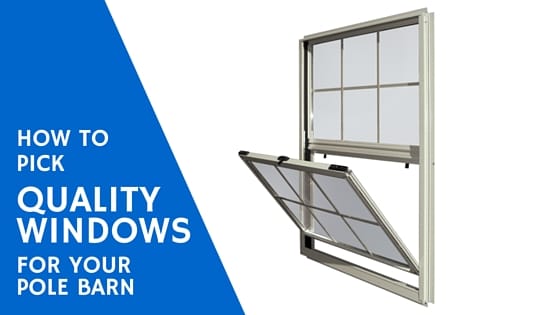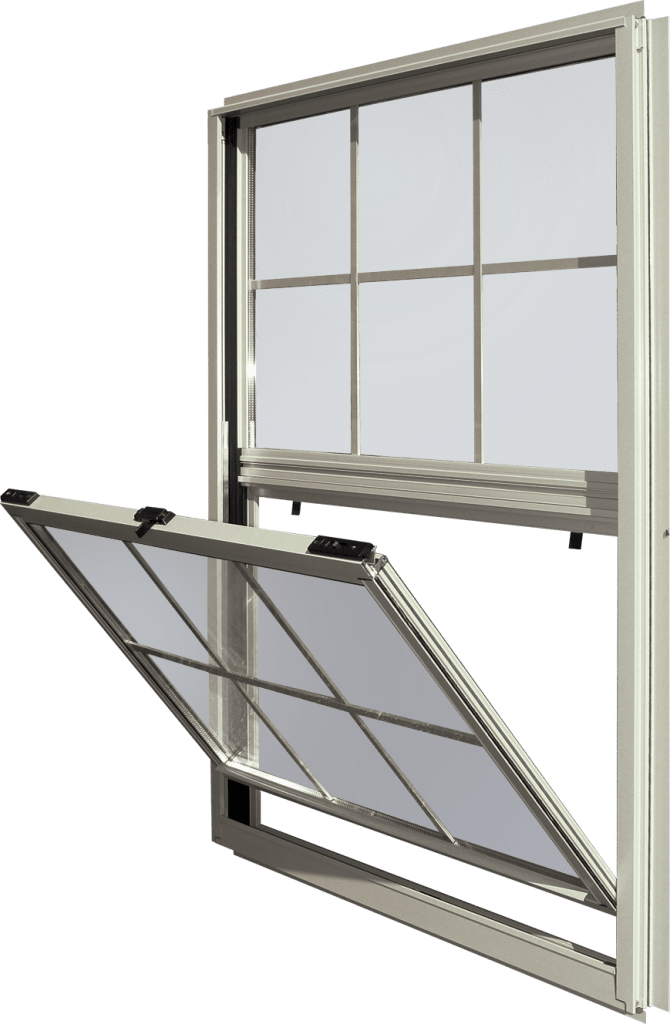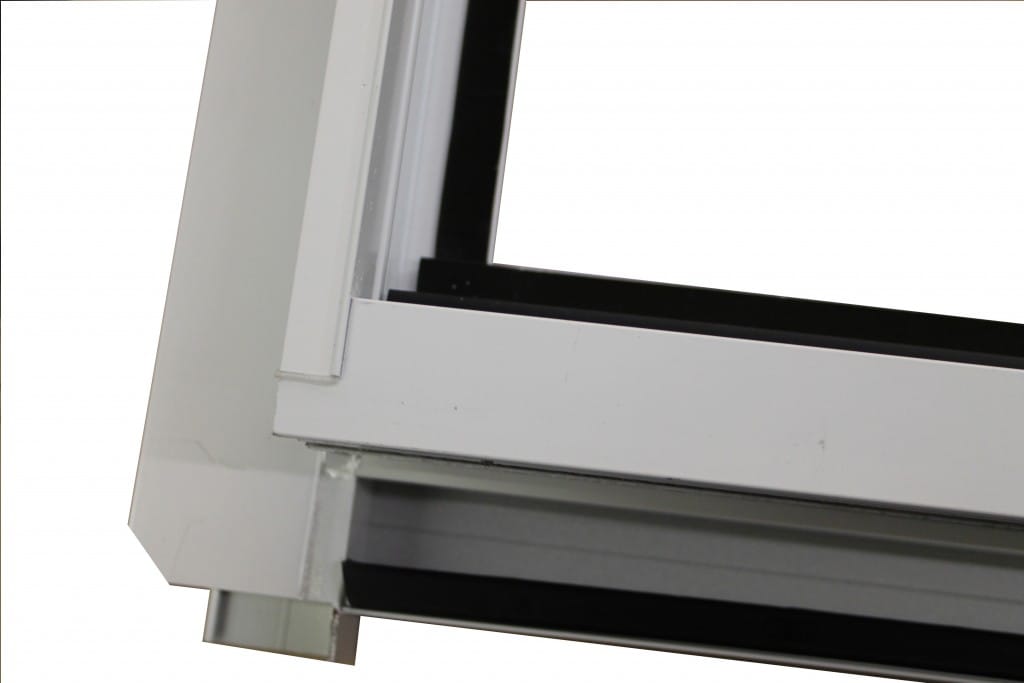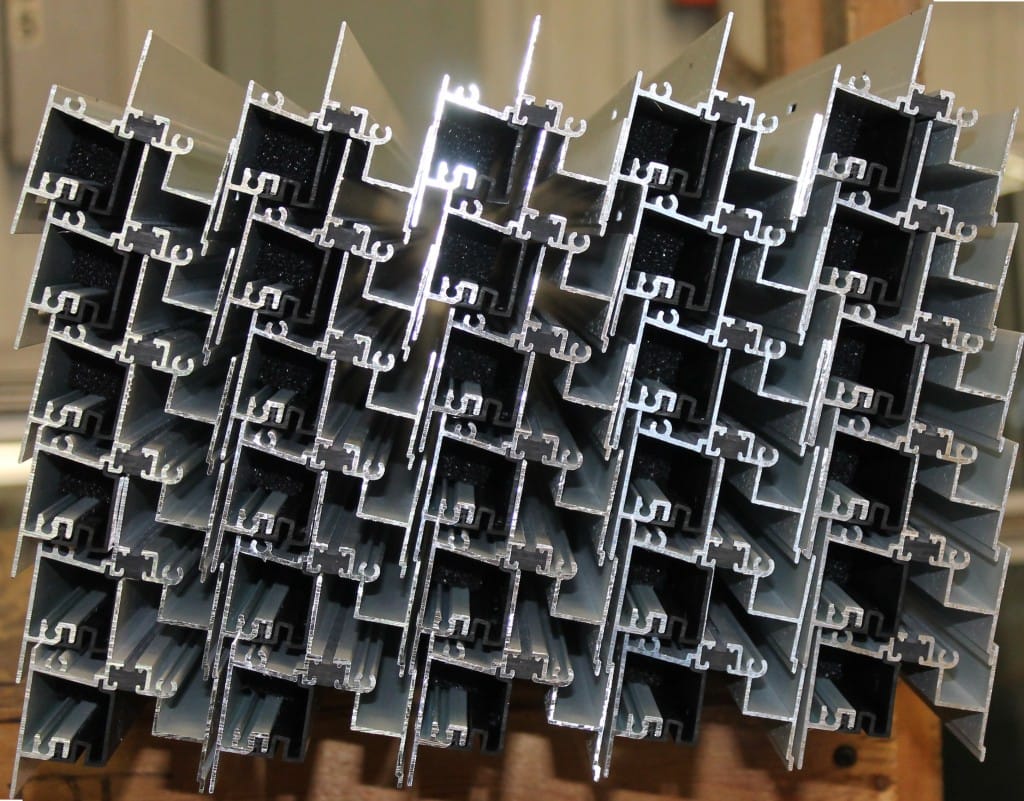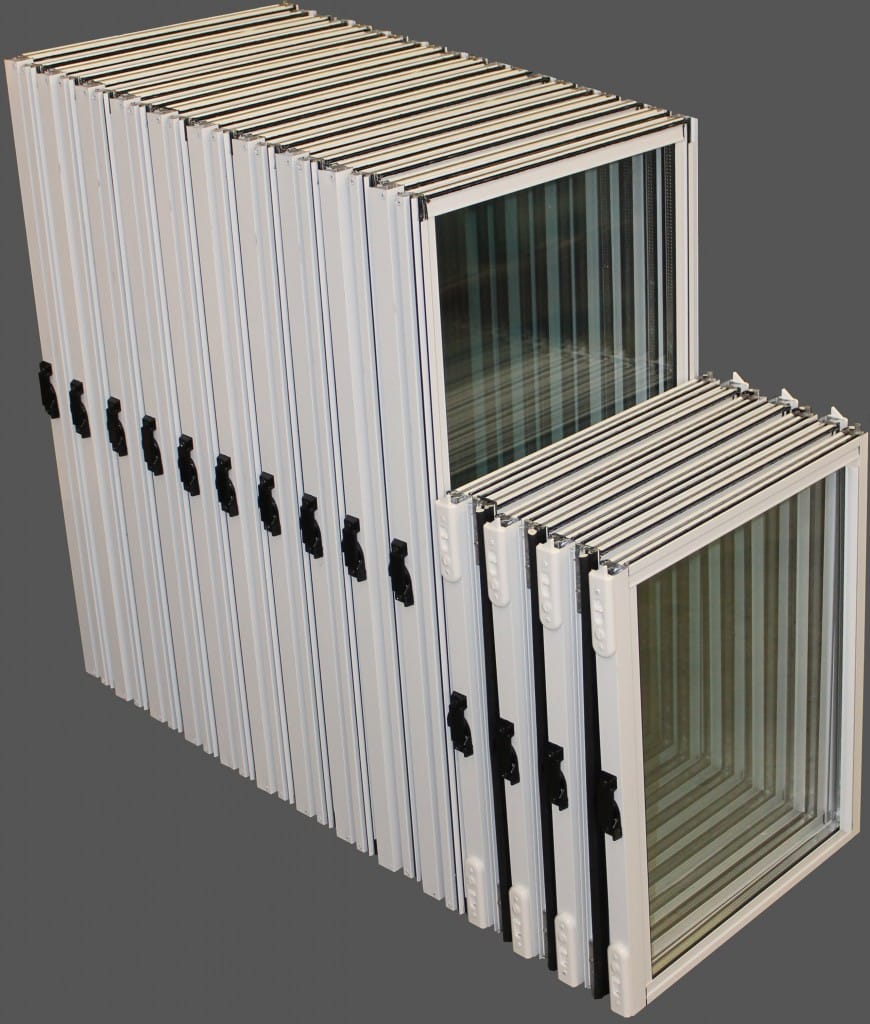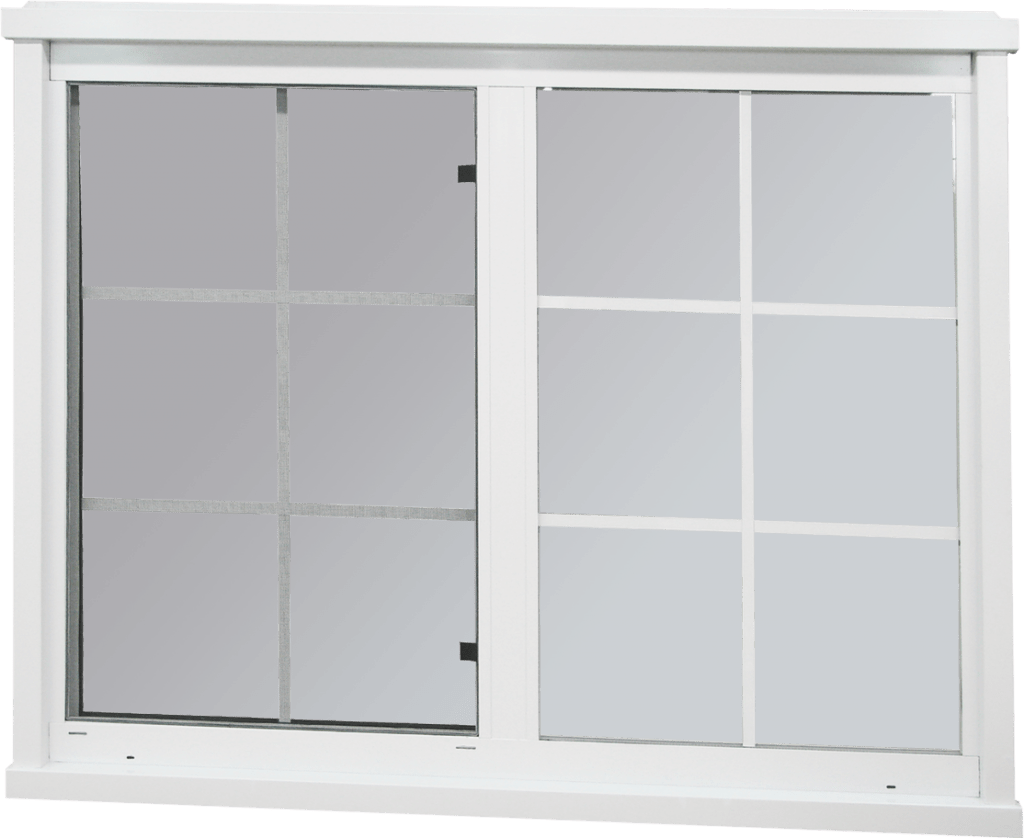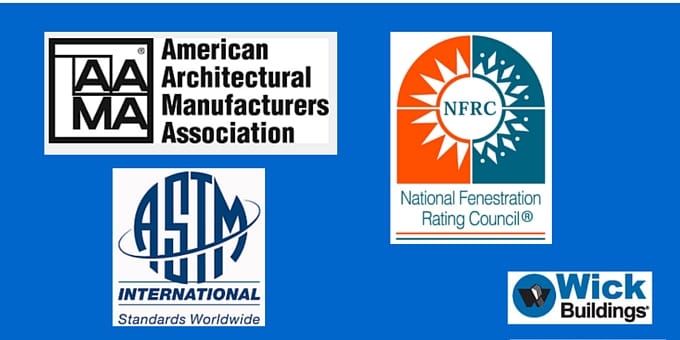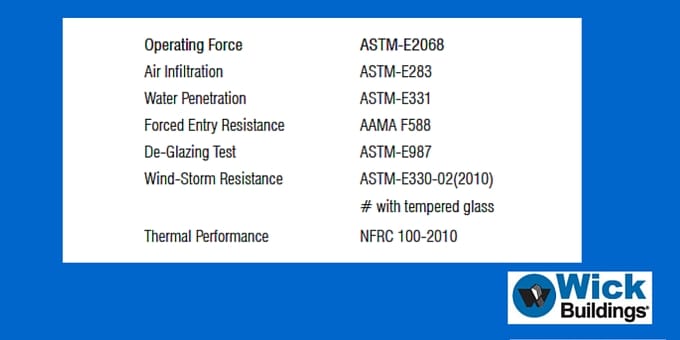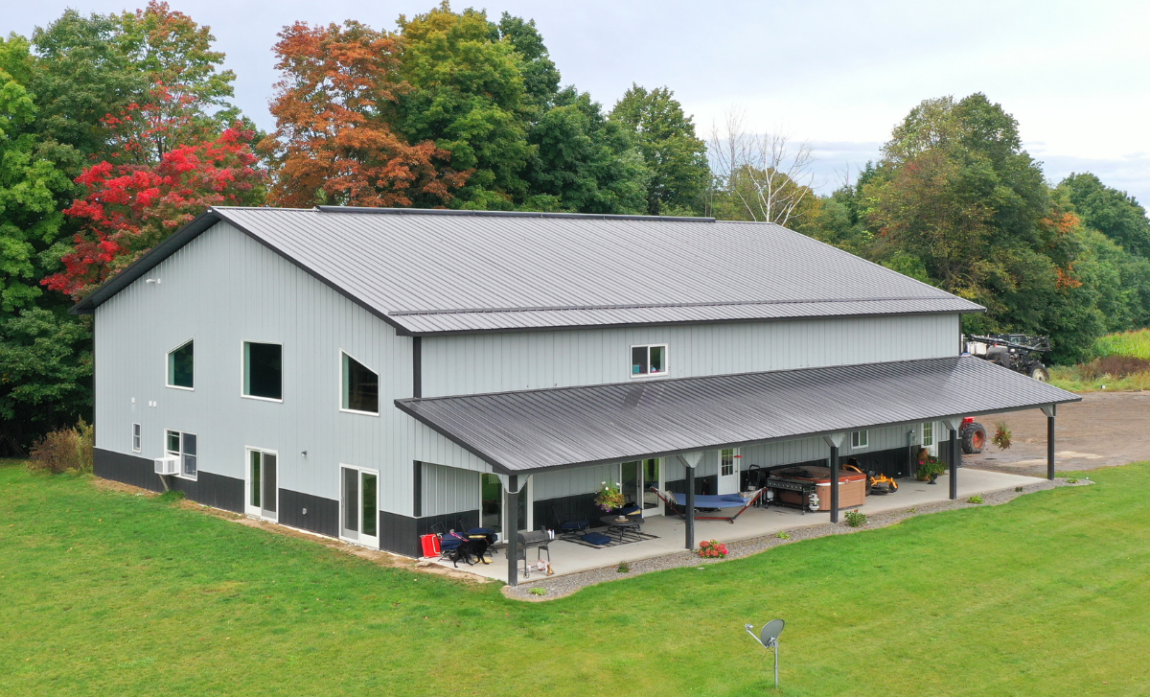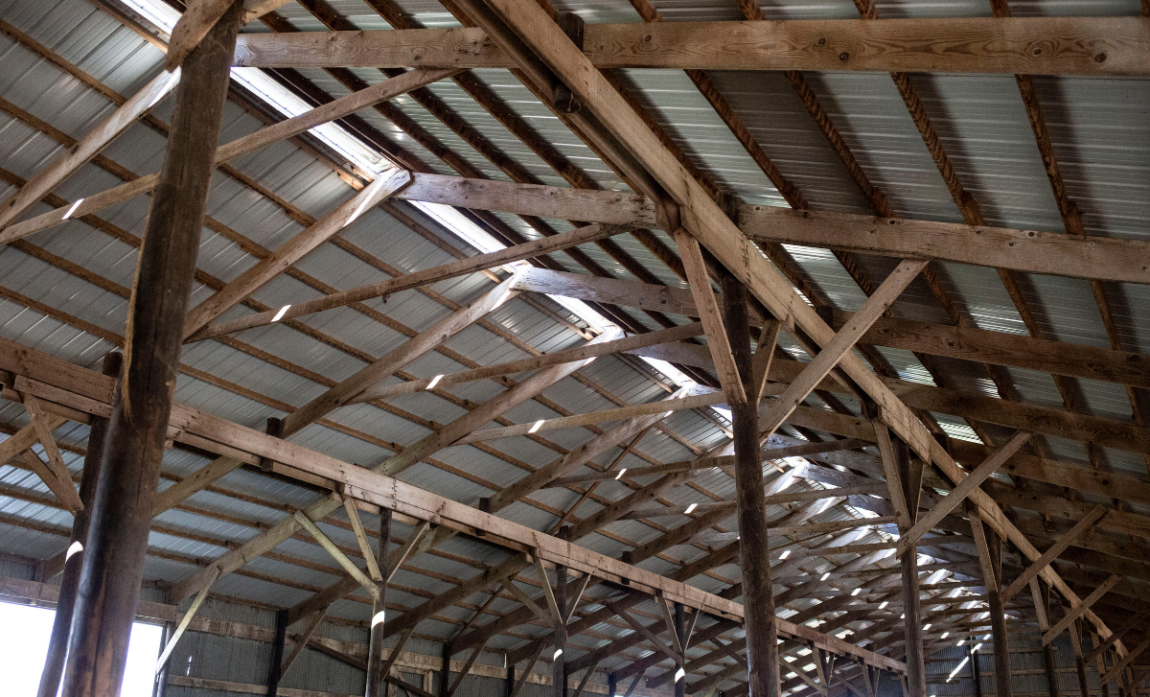When you’re building a pole-barn, typically you work with a builder who will recommend the right window for the job. However, if you’re aiming for high-quality construction, you should be familiar with the components of pole barn windows, and be aware of both benefits and things to avoid.
As always, our blog is all about saving you money. Not by skimping, but by selecting quality materials.
The top builders will recommend the top windows. But sometimes, in an effort to save money, a lesser quality window will be recommended.
What Do You Want Out of Your Pole-Barn Windows?
To ensure you’re getting a top window, we’ve enlisted the help of Al Geisthardt of Plyco Corporation to explain what to look for in a window. His insights are reflected in this post.
NOTE: This post isn’t about Plyco windows – we’ll just be focusing on general window characteristics.
The goals for a post-frame building tend to be different than a residential building. With a home, comfort is at the top of the list. You want low air infiltration, no condensation, and you’d like to keep it clean.
Those apply to pole-barns as well, but the emphasis tends to be more on energy performance, security and minimizing maintenance costs. If those are our top priorities, let’s see how they are reflected in the window spec sheet.
Window Specifications – The Dollars are in the Details
Most spec sheets for windows include the following options. This is a high-level explanation to provide you with a general idea of a window’s characteristics:
Also, be sure to listen to bonus content from Leo Skirek of Wick Buildings as he discusses what are some important considerations – and frequent mistakes – people make when selecting windows for a pole barn.
Mulling Options
Mulling is the process of attaching two windows together. You typically select a window that matches your intended operation. Do you want a sliding window attached to a fixed-lite window? Or two vertical hung windows, mulled side by side?
The mulling option you select will enable the right configuration. There aren’t any typical quality standards; these are just configuration options.
Material
Typical window materials for frames include aluminum, fiberglass, composite or wood.
For residential use in cold weather climates, you’d typically choose composite or fiberglass options, as they tend to be the most effective at preventing frost from forming around the edges of window.
Pole barns / post-frame structures are different. On a post-frame building, you’re likely to have more gaps and air inflows. There will be typically be more frost, so you’ll want aluminum windows that are better at withstanding water penetration.
Vinyl is not a solid choice for a pole-barn window frame. It tends to be too flexible; aluminum is structurally stronger. The added strength is necessary. For example, a 5/0 x4/0 pole-barn window needs to be sturdy for installation.
Aluminum windows also tend to latch very well. They’re much more secure than other windows.
Joints
Another strong argument for aluminum is the construction technique used to make the window joints – called “joinery.”
Essentially, the two joints on the frame are screwed together, and expanded cellular foam gaskets are used to prevent leakage. (Some manufacturers, such as Andersen Windows, have their own proprietary techniques.)
Not to pick on those poor old vinyl windows, but they’re mitered at a 45 degree angle and welded with heat. Besides a not-so-attractive appearance, these welded joints won’t have the strength you get with “joinery.”
Thermal break
Conceding that we are going with aluminum, let’s look at the thermal break. It’s a verrrry important part of the aluminum frame. The thermal break separates the inside aluminum from the exterior aluminum, so the cold doesn’t transfer through the frame.
Now you can’t completely prevent frost, but an effective thermal break sure can put up a serious fight.
Everyone uses polyurethane for the thermal break, as it’s the accepted commercial standard. Polyurethane is poured into place, then when it’s solidified, a segment of the aluminum is actually sawed away to create the barrier against heat loss.
Pro tip: Be sure the thermal break meets the AAMA TIR-A8-90 standard (tested for strength).
Colors
What does color have to do with quality? Isn’t it just a matter of preference?
Actually, if your goal is low maintenance, your best bet is white. White by default is the most fade resistant color (or lack thereof) on the market. Naturally, any time you put a painted surface out in the sun, it’s going to begin to fade. Slowly, yes, but surely as well.
Pro Tip: The commercial architectural paint standard is AAMA 2603-05. Any manufacturer meeting that standard will meet yours too.
Grids
Grids are aesthetically pleasing, but a maintenance headache. Unless, that is, they’re mounted in between the glass panes.
If you go that route, not only to you avoid the continuous, messy cleaning involved, you’ll likely also get a warranty in the 10-year range. So if you would like a grid, opt for something encased.
Weather Strip
When windows are tested, an equivalent of a 25 mph wind is simulated against the window. Manufacturers measure the air penetration, then weather strip to stop as much as possible.
Wool pile with poly fin is the best weather-stripping materials. It stays flexible in cold weather. Avoid PVC weather-stripping, as it can tear.
Glazing
“Glazing” and glass are the same thing. Glazing is simply the glass cut to a specific size. You’ll always want a sealed, double-paned insulating unit. And an AAMA approved cellular foam tape with a silicone cap-bead will seal the glass onto the frame itself.
Pro Tip: Beware a window made with a process called “swiggle edge”, in which a cheaper spacer is used between two panes of glass.
AAMA, ASTM, NFRC: The Standard Bearers and Why They’re Important
We’ve mentioned a few different standards as we detailed the characteristics. AAMA and ASTM, for example, are both organizations that create standards for the building industry. But who are these organizations setting the standards, and why should you entrust your window quality to them?
AAMA – American Architectural Manufacturers Association (aamainfo)
As the AAMA tells you on their website, since 1936 they’ve been a strong advocate for manufacturers and professionals in the fenestration industry with respect to product certification, standards development, education and training, legislative regulations, building and energy codes.
NFRC – National Fenestration Rating Council
The NFRC is the leader in energy performance information, education, and certified ratings for fenestration products. This is a great video that explains the NFRC label that appears on windows, and how it can save you money.
ASTM International – American Society for Testing and Materials
The ASTM provides over 12,000 standards globally in a variety of industries.
What the Heck is AAMA/WDMA/CSA 101/I.S.2/A440-11?
The umbrella standard for every window is the AAMA/WDMA/CSA 101/I.S.2/A440-11. It is the North American fenestration standard/specification for windows, doors and skylight.
This is a voluntary standard, but one you’ll want your window manufacturer to follow. Here’s an excerpt of the full standard, if you’re up for some light reading.
A quality window will adhere to the standards set forth by these organizations. Here are the standards the Plyco windows meet, for example:
Really, It’s all About The Window Installation
All these standards mean little, however, unless the window is properly installed.
The key to a quality installation is preventing the penetration of air and water. Water follows air; anything that air can get through, water will as well. The perimeter of a window needs to be effectively sealed, with the proper taping between the outside skin and the window frame itself.
As you might have guessed, ASTM has a standard for installation – ASTM 2112, but don’t bother asking your contractor if they adhere to it.
The standard is complicated and detailed, and it’s the job of the manufacturer and their team of engineers to provide the proper instructions and documentation for the installation pros.
The Big Takeaway: A Little Knowledge of Standards Goes a Long Way
We’ve provided you with more knowledge than you’ll likely ever need when you’re purchasing a window for a pole-barn. Our goal was not to make a Wikipedia sized webpage on windows specs: It was to show you the essential quality guidelines for your windows.
Nine times out of 10, the windows you choose and the builder who installs them will meet all the standards listed above. But there may be occasions when you run into a builder who takes a few shortcuts to keep costs down. Again, it’s rare, but we’ve seen it happen.
Quality is the key to long-lasting windows, and ultimately reduced energy and maintenance costs. Pay attention to these quality attributes to be certain you blend quality and cost-savings.

